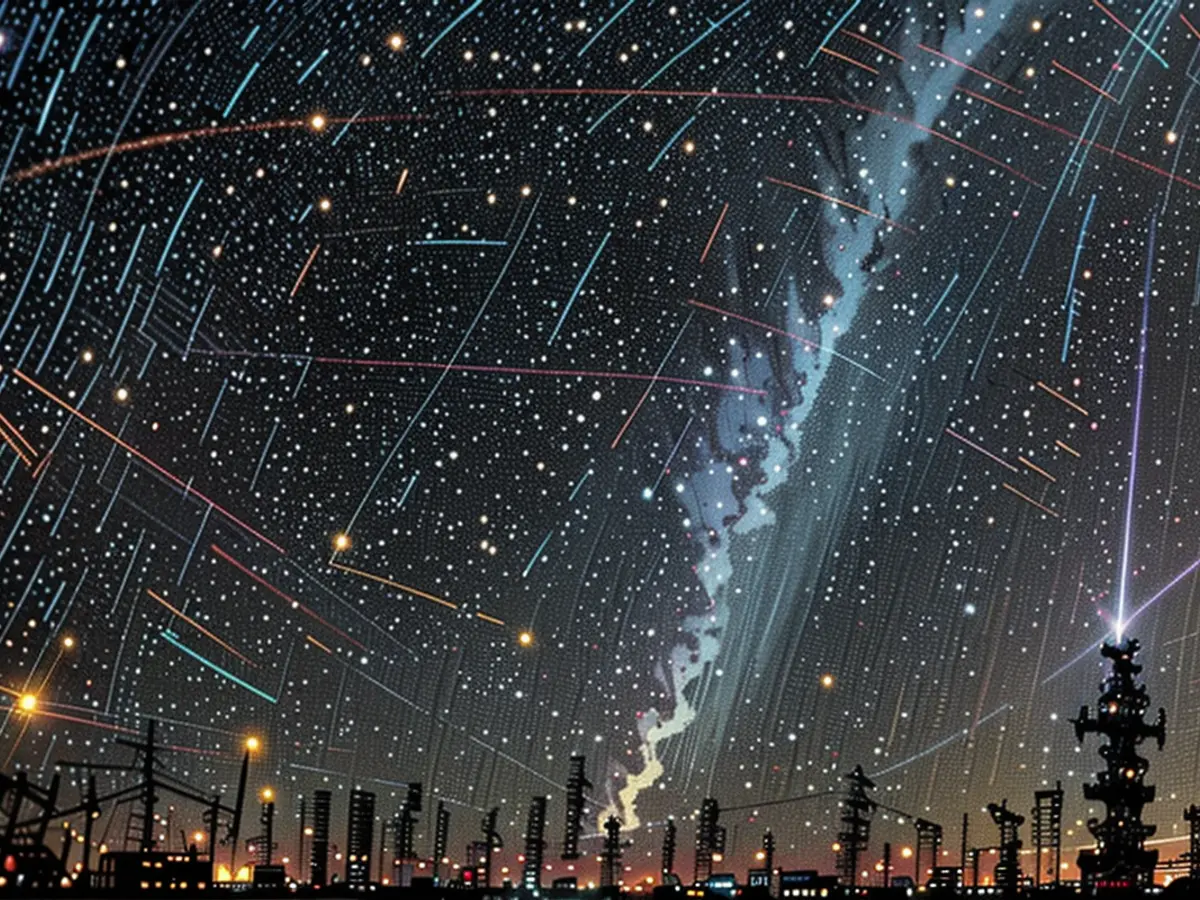Setting the Stage for a Space League of Nations: Astronomers Clash with Brighter Starlink Satellites
SpaceX is hatching an ambitious plan to beef up the Starlink satellite network, but the astronomy community's reaction is anything but a stellar welcome. The incoming Direct-To-Cell (DTC) satellites, slated to be five times brighter than their current Starlink counterparts, have sent astronomers into a tailspin with worry.
The DTC satellites stand to be more than just network whizzes; they'll provide direct access via smartphones, bypassing the need for additional antennas. But for astronomers, it's a different story – they've set off alarm bells against these glaring Beacons of SpaceX.
In the wake of a successful test run of six prototypes in January, SpaceX filed a staggering application for a monumental 7500 DTC satellite launch, as reported by researchers from the International Astronomical Union (IAU) in a recent survey. With the proposed launch, these satellites are anticipated to orbit within a tight 340 to 345-kilometer altitude. Unsurprisingly, this has the IAU weighing in on the potential fallout.
Cranking Up the Intensity
The tireless research team of Anthony Mallama and colleagues from the "IAU Center for the Protection of the Dark and Quiet Sky from Satellite Constellation Interference" studied the six already-orbiting prototypes using a world-wide pool of observers' data and the MMT9 robotic telescope. Their conclusion? These satellites shine 4.9 times more powerfully than previous Starlink satellites. However, they do include a caveat - the satellite's antenna's role in brightness is yet to be unfolded.
Extinguishing the Glare
In the past, SpaceX lended a sympathetic ear to astronomers' concerns, partnering on measures like less reflective coatings to dim the satellites' brightness. If implemented effectively for the DTC satellites, the increased luminosity might potentially plummet by half, dropping to just 2.6 times its original intensity.
With over 6000 Starlink satellites already in low Earth orbit and an ambitious plan to expand to over 34,000, interference-free observation has become an increasingly daunting task for astronomers. To help them wade through this technological smog, the IAU has piloted its own satellite monitoring service for two years.
Skywatchers' Outlook
Will SpaceX extinguish the neon glare of the DTC satellites? Or will the increase in illumination leave us in a sky alien to our own senses? The fate of celestial observation rests on SpaceX's ability to innovate and accommodate.
Starlight, Starlink, and Beyond
It seems Starlink's brightness initially blindsided everyone, including SpaceX and the astronomical community[1][5]. The potential impact on observations is still relatively negligible, but the future increase in the number of satellites poses significant concerns[5]. If history repeats itself, assistance may come from unexpected quarters, as SpaceX collaborates with astronomers to create changes that diminish satellite brightness[3][4].
Innovative solutions experimenting with coatings, sunshades, and shifting satellites away from sunlight are already in the works[1][2][4]. SpaceX's commitment to minimizing the impact of Starlink satellites on astronomical observations reflects its determination to preserve the night sky's sanctity for scientists and starry-eyed dreamers alike. Who knows? Perhaps space will someday prove more harmonious – a galaxy of collaboration, where satellites and telescopes coexist like celestial dancing partners.
Bonus Insights:
- SpaceX is testing coatings like DarkSat and considering sunshades to fight off inflated satellite brightness[1].
- Maintaining the integrity of the night sky is a delicate game between technological advancement and the needs of astronomers[3][4].
- SpaceX is making concerted strides to ensure its satellites pose minimal obstacles to astronomical observation[3][4].







